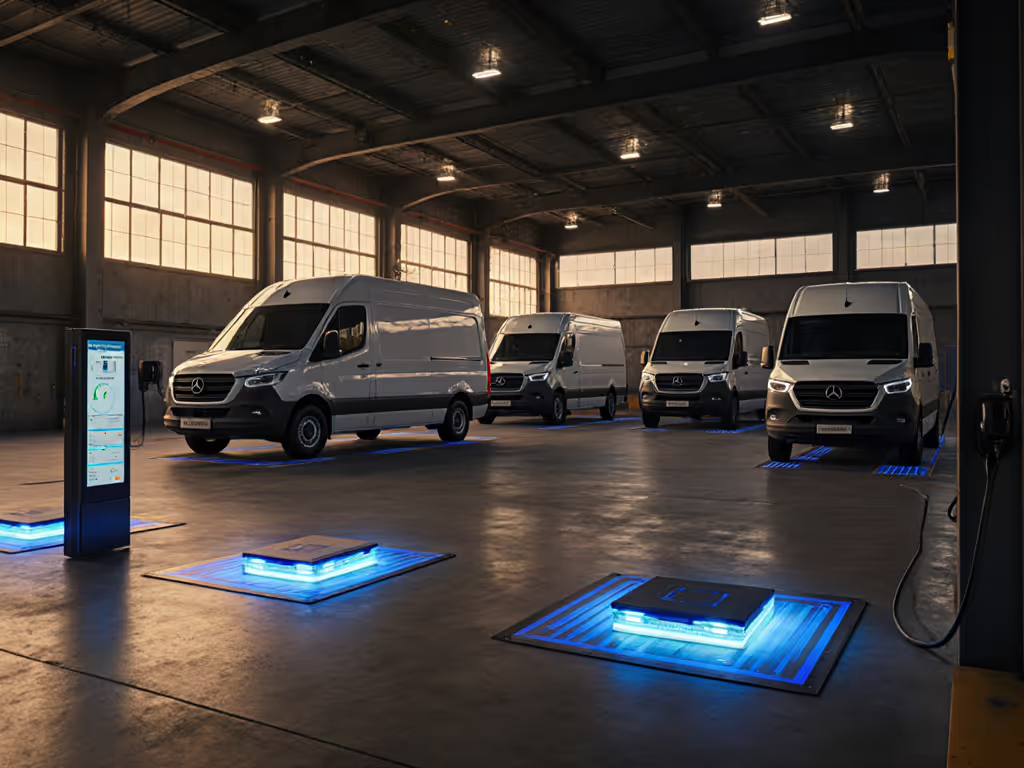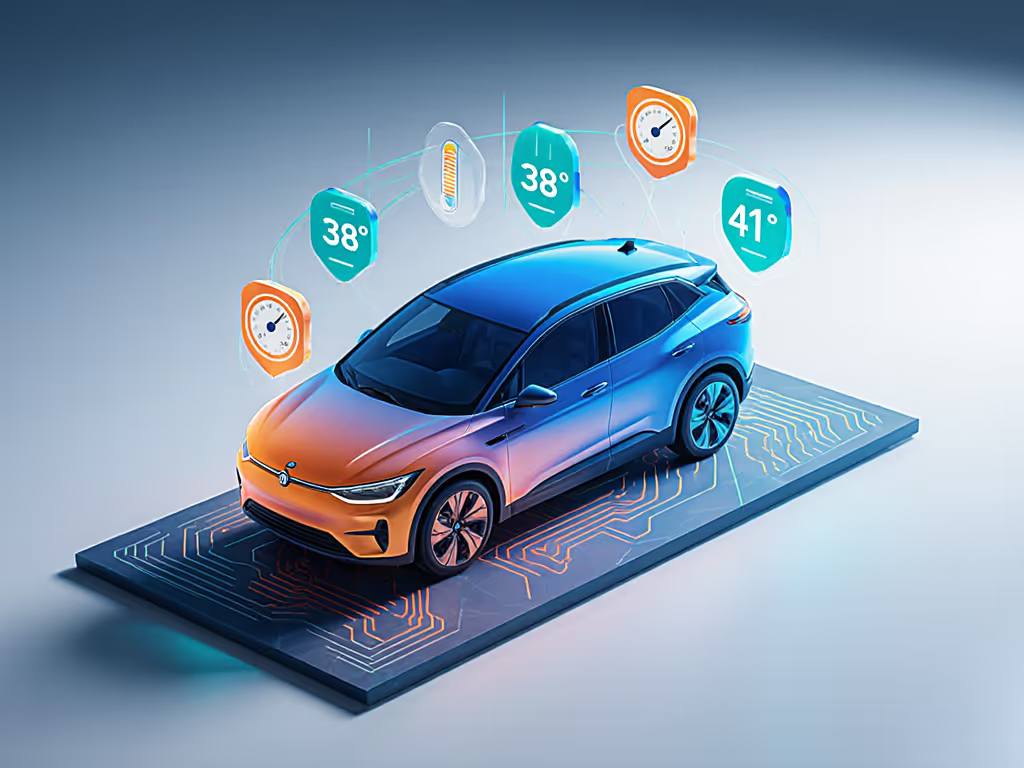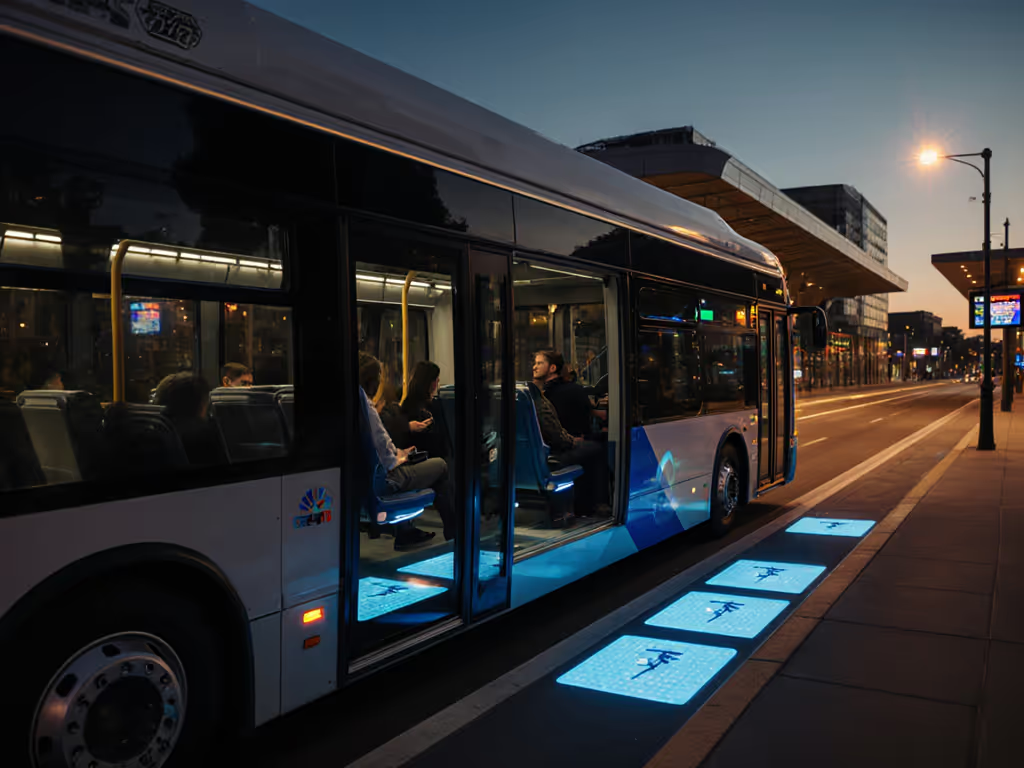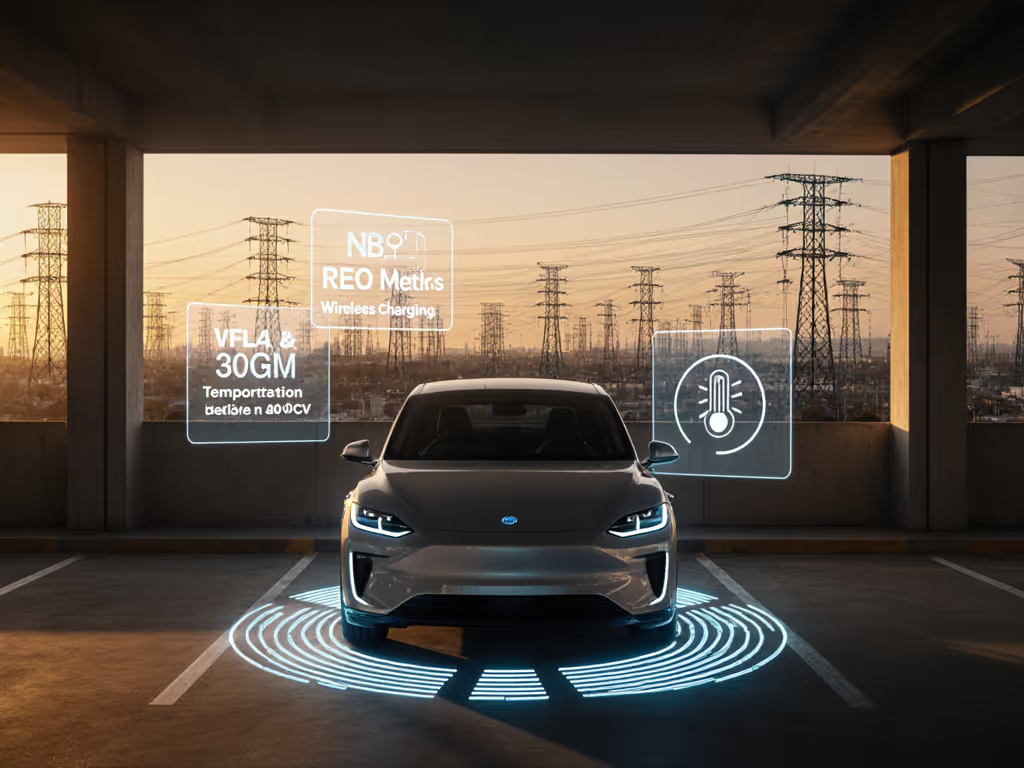
Wireless Fleet Charging: Cut Downtime, Maximize Battery Longevity

For commercial fleet operators evaluating next-gen infrastructure, commercial fleet wireless charging represents a strategic shift beyond convenience. It's a thermal management solution. When integrated with purpose-built EV fleet charging solutions, these systems directly address the #1 killer of lithium-ion longevity: heat accumulation. Unlike plug-in alternatives that risk inconsistent thermal profiles during opportunistic charging, wireless systems engineered for depot and route stops enforce critical temperature thresholds. Properly designed deployments keep batteries within the 20°C-35°C sweet spot, extending usable pack life by 25-40% according to recent FTA transit bus studies. This FAQ explores how fleets can leverage wireless charging not just to reduce downtime, but to actively protect their largest capital asset (the battery itself).
Why Wireless Charging for Fleets? Beyond Cable Convenience
How does wireless charging actually reduce operational downtime compared to plug-in systems?
Wireless charging minimizes human-dependent variables. For a systems-level overview of depot and en-route pads, see our EV wireless charging systems guide. With automated alignment (e.g., via parking guides or vehicle positioning systems), delivery vehicle charging completes without a manual plug connection (critical for short-shift vehicles like taxis or food delivery EVs). Oslo's municipal taxi fleet reduced charging downtime by 72% using wireless pads at designated stands, eliminating driver fumbling with cables during peak hours. Crucially, this consistency prevents the thermal spikes common with rushed plug-in sessions, where drivers might initiate charging while batteries are already warm from operation.
Does wireless charging accelerate battery degradation through heat? How is this mitigated?
Keep it under 40°C when possible. This isn't just advice, it's a battery longevity mandate backed by MIT battery lab data.
Early wireless systems faced criticism for efficiency losses generating excess heat. Modern commercial solutions like those deployed in 10+ U.S. transit agencies (per FTA Report 0270) now achieve mid-90% efficiency when vehicles are properly aligned, comparable to Level 2 wired systems. For the physics behind efficiency and energy loss, see our wireless charging efficiency explainer. Thermal management is baked into the protocol: sensors monitor battery temperature in real-time, dynamically throttling charge rate before exceeding 38°C. This is where wireless charging ROI extends beyond labor savings; by avoiding the 45°C+ temperatures that degrade electrolytes, fleets preserve capacity for 2,000+ additional cycles. My own summer road trip with a cheap magnetic mount taught me that one 43°C+ event can trigger permanent capacity loss, a lesson fleet managers can't afford to learn the hard way.
Implementation Considerations for Fleet Managers
What power levels are viable for commercial fleets, and how does this impact battery health?
Current commercial fleet wireless charging systems operate primarily in two tiers:
- 7-11 kW (AC equivalent): Ideal for overnight depot charging. Maintains low thermal stress (typically <32°C) due to extended dwell time. Perfect for delivery vans returning to base.
- 50-350 kW (DC): Enables route charging for high-utilization vehicles (e.g., airport shuttles). Requires active cooling but includes mandatory thermal throttling when batteries approach 38°C.
Crucially, unlike DC fast chargers that often prioritize speed over thermal safety, reputable wireless systems for taxi wireless charging embed lithium-ion safety thresholds into their firmware. Our wireless charging speed test shows how thermal throttling preserves pack health during high-power sessions. InductEV's 450kW commercial pads, for example, halt charging at 41°C (not after damage occurs, but before critical degradation begins). This aligns with the core principle all battery technicians know: Protect the pack, and performance naturally lasts the distance.

How does wireless charging integrate with existing fleet management systems?
Top-tier EV fleet charging solutions communicate directly with fleet management systems via Open Charge Point Protocol (OCPP) 1.6+. For grid-side ROI and bidirectional power planning, see our wireless V2G implementation guide. This enables:
- Battery health reporting: Real-time cell temperature and state-of-charge logging
- Smart thermal scheduling: Delaying charging until battery cools below 35°C overnight
- Usage analytics: Correlating charge events with long-term capacity fade
Without this integration, wireless charging becomes just another charging method. With it, you gain predictive maintenance insights, like identifying vehicles prone to thermal stress during afternoon routes. One municipal bus fleet using FDTech's system reduced battery replacement costs by 18% by adjusting shift schedules based on thermal data.
Addressing Real-World Fleet Concerns
Is wireless charging efficient enough for hard-working fleets?
Yes, when properly deployed. Modern static inductive systems achieve 92-94% efficiency at optimal alignment, only 3-5% below wired Level 2. But efficiency alone misleads; wireless charging ROI requires measuring total operational impact:
- Labor savings: Eliminating manual plugging saves 2-3 minutes per vehicle per shift
- Downtime reduction: 24/7 availability at route stops extends utilization
- Battery preservation: 30% longer pack life offsets marginal energy loss
Fleets running vehicles >100 miles/day see the strongest ROI, particularly with delivery vehicle charging during mandatory rest periods. To reduce stops altogether, explore dynamic EV road charging. The key is avoiding thermal compromises; no system, wired or wireless, delivers good ROI when batteries degrade prematurely.
How do cold climates affect wireless charging and battery longevity?
Lithium-ion batteries naturally slow charging below 5°C. Advanced wireless systems combat this with:
- Pad pre-heating: Warming the receiver coil to 10°C before charging begins
- Battery preconditioning: Integrating with vehicle telematics to start warming during approach
- Dynamic current adjustment: Reducing charge rate until battery reaches 10°C
Unlike plug-in chargers that often force low-temperature charging (risking lithium plating), quality commercial fleet wireless charging solutions include temperature locks that prevent charging until batteries hit 5°C. This caution adds 8-12 minutes in extreme cold but prevents permanent damage that would cost thousands in early pack replacements.
The Longevity Advantage: Why Temperature Control Wins
How does wireless charging compare to plug-in for battery health?
| Factor | Wireless Charging | Plug-In Charging | Winner for Longevity |
|---|---|---|---|
| Thermal Consistency | Sensors throttle before 38°C | Manual start; often begins at operational temps | Wireless |
| Peak Temp Exposure | Max 40-41°C (with throttling) | Commonly 45-50°C+ during DCFC | Wireless |
| Overnight Charging | Delayed until battery cools | Immediate charging | Wireless |
| Real-World Impact | Preserves 25-40% more capacity after 3 years | 15-30% faster degradation | Wireless |
The FTA's transit bus study confirms this: wireless-charged buses showed 22% less capacity fade than plug-in counterparts after 18 months, directly tied to stricter thermal enforcement. For fleets, this translates to maintaining 80% battery health for 5+ years versus 3.5 years, a massive TCO advantage.
What's the biggest oversight fleets make when adopting wireless charging?
Ignoring the battery's perspective. Many evaluate based on charge speed or pad cost alone, then wonder why packs degrade early. A quality system must:
- Prioritize thermal safety over speed: Slower charging at 30°C beats fast charging at 45°C
- Require real-time battery communication: Not just vehicle state-of-charge
- Enforce automatic pauses when temps exceed 38°C
Remember that lesson from a melted summer road trip: one overheating event can trigger cascading failure. Fleet-scale charging demands systems designed for the battery, not just the schedule.
Conclusion: Charging Smarter, Not Just Faster
Commercial fleet wireless charging succeeds when it serves dual masters: operational uptime and electrochemical longevity. By hardwiring the 40°C thermal limit into charging protocols, modern systems transform from mere convenience tools into battery preservation platforms. The Oslo taxi case proves viability, FTA data validates longevity gains, and real-world efficiency narrows the wired/wireless gap to single digits.
Fleets pursuing this should prioritize solutions with integrated thermal telemetry, not just pad placement. As costs decline (projected 30% drop by 2027 per IDTechEx), early adopters will reap compound benefits: lower downtime today, fewer battery replacements tomorrow, and the quiet confidence that every charge cycle actively protects their most valuable asset.
Keep it under 40°C when possible. This simple rule, embedded in your charging infrastructure, pays dividends long after the initial ROI is realized.
Further Exploration: Dive into the FTA's "Effectiveness of Wireless Charging for Electric Transit Buses" (Report No. 0270) for battery cycling data, or review IDTechEx's 2025-2035 infrastructure analysis for adoption roadmaps. Always request thermal performance curves from vendors, real battery longevity happens in the degrees between 35°C and 40°C.




